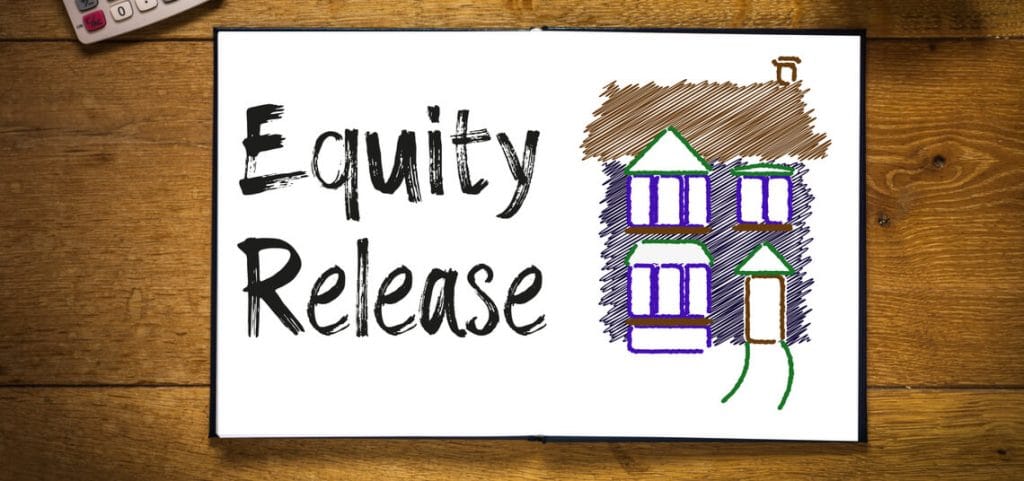Homeownership is all about living somewhere you love and creating long-lasting memories. But there is a business side to it, no matter how much we might like to think of a home as our humble abode and nothing else. Every person who buys a house will do so, hoping that it increases in value over time. This is called equity, which can help you move up the property ladder and potentially give you more financial freedom. But how does equity work, and what does it mean for you? We’ve got all the details you need in this guide about equity in your home.
What is equity?
For example, if you own a home worth £500,000 and have a mortgage amounting to £200,000, you’ll have £300,000 worth of equity.The amount of equity in your home can fluctuate over time, depending on market conditions. But it’s more likely to increase while your mortgage payments reduce as long as the home doesn’t lose its value.
What is equity release?
With equity release, you can potentially turn the value of your property into real cash. There are several ways to do this, but by far the most popular is remortgaging to borrow more money. Interest rates are currently at an all-time low, which means there are currently many competitive mortgage products on the market.
The mortgage doesn’t need to be paid off in full either, though if it was the equity would be 100%.
If, for example, you owe £200,000 on a £500,000-valued home, you could borrow more based on the loan to value offered by the lender (usually up to 75%).
Benefits of investing in buy-to-let
If you’re asking yourself whether buy-to-let is a good investment, then it’s a good idea to look at the benefits. There are two primary reasons people invest in buy-to-let: capital appreciation and yields.
Equity release for over 55s
There is another form of equity release, where homeowners aged 55 and above unlock the value of their home via several policies that allow them to access the cash tied up. You can either take the money released in one lump sum, in smaller instalments over time or a combination of the two.
The primary way to do this involves getting a lifetime mortgage, which sees you borrow some of the home’s value at a fixed or capped interest rate. You have the option to take the money in one lump sum or in smaller increments, known as ‘drawdown’.
If you choose drawdown, you will only be charged interest on the cash you actually take and not the money leftover. With a lifetime mortgage, the interest will add up rapidly if you don’t make any repayments. The majority of lifetime mortgages allow for lifetime repayments, however.
Why do people release equity in their home?
People over 55 may release the equity in their homes as a top-up for their retirement and to generate more income. But this approach can be risky as you could get locked into a high-interest rate. It’s always best to seek advice from professionals like accountants who can help you make important money-related decisions.
For people under 55, the primary reason for releasing equity is usually for home renovations or to pay off debts. The former can help increase the value of your home further, while the latter will alleviate financial pressure related to owning debts.
Before deciding about releasing equity against your home, make sure that you understand the risks involved. Releasing money for debts only works if your overall payments reduce each month. While adding an extension to your house or renovating is only worthwhile if it will add significant value to your home.
What about equity release for buy-to-let?
Equity release for buy-to-let is far more common, as landlords typically use the money to purchase another investment property. This is especially true if the property has grown in value since they first bought it.
For example, a property purchased at £300,000 with a £125,000 mortgage may have increased to £350,000 in value. That would mean the equity available has grown from £175,000 to £225,000 and make for a decent amount of equity release for buy-to-let investment.
Most lenders allow you to borrow up to a 75% LTV (sometimes even more), so there’s usually enough wiggle room to release the extra funds after the property has increased in value – especially if its price has risen considerably.
How can I work out the equity in my home?
You can ask a local estate agent to value your property, as they know the neighbourhood and will be able to give you a good indication of its worth. There are also online valuation tools that can give you an estimate based on the information you provide. Another option involves looking at local house prices for properties in your area.
What is negative equity?
For example, the property is worth £200,000, but you owe a mortgage of £250,000. This would give you negative equity of £50,000.It’s rare to see negative equity in the UK, especially with interest rates so low. House prices have been on the rise since the financial crisis in 2008. Of course, it’s still possible to fall into negative equity, and it’s not something that should be taken for granted due to the UK’s fairly robust housing market.
Final words: is equity release a good idea?
That depends on what you need it for. Equity release can be a good move as long as the financials add up, especially if it’s equity release for buy-to-let and you’re reinvesting the money. Ultimately, it comes down to your own personal circumstances and why you wish to release the equity. For some people it’s a good idea that can give them financial freedom, but for others it might not be worth releasing equity.



